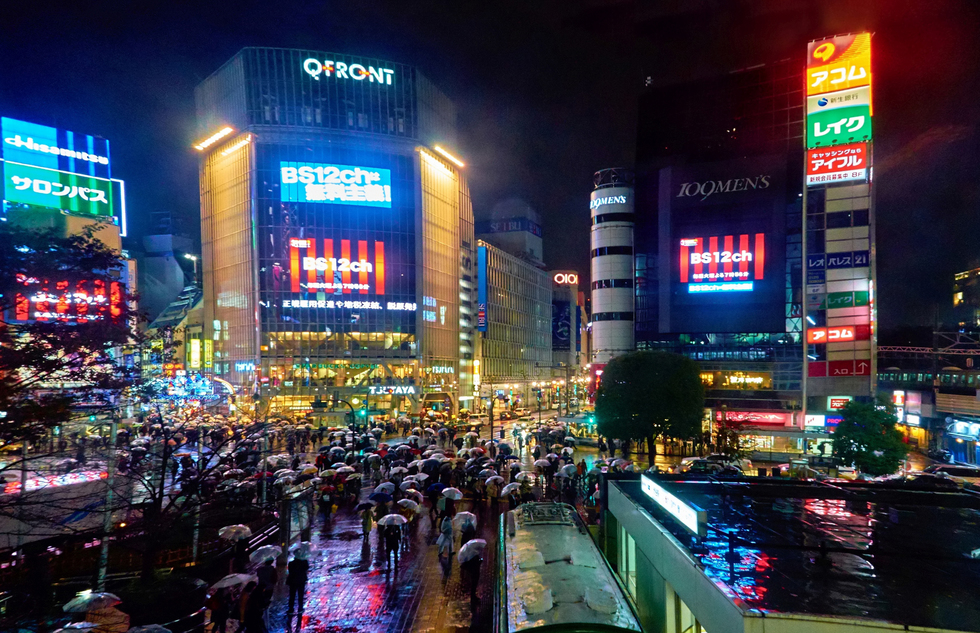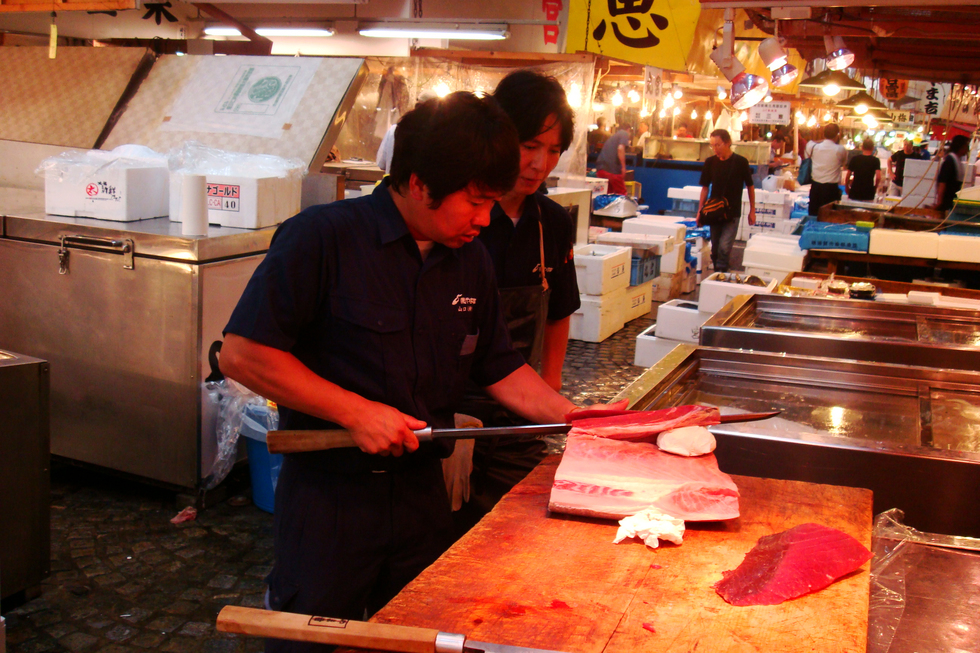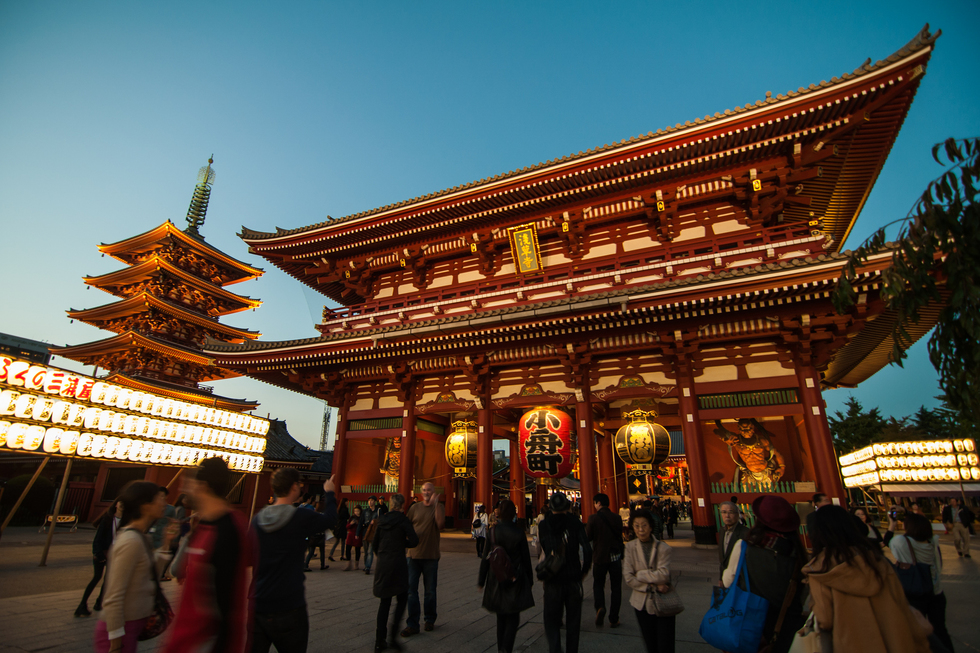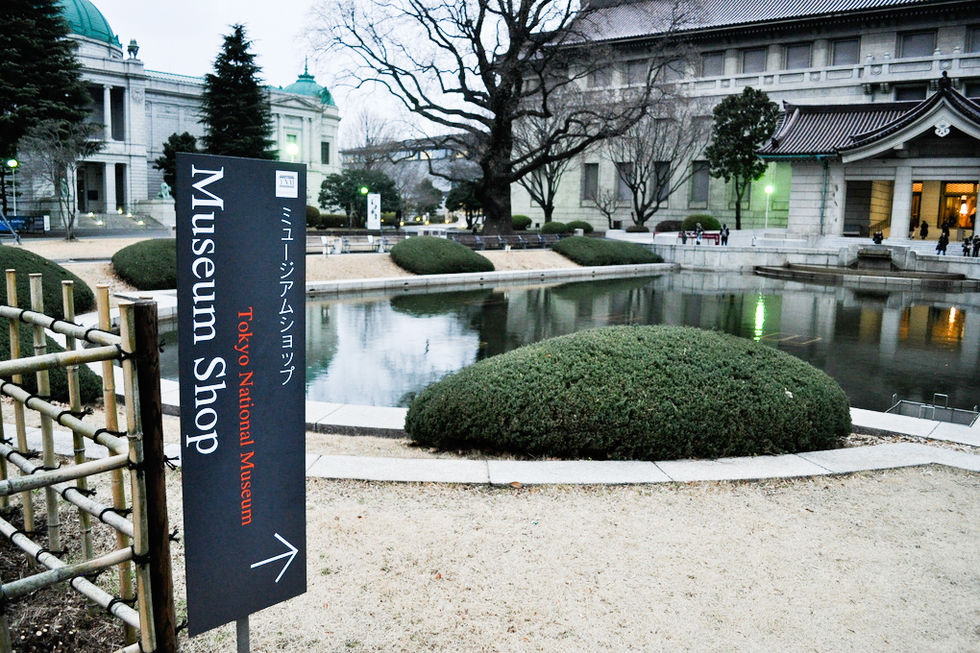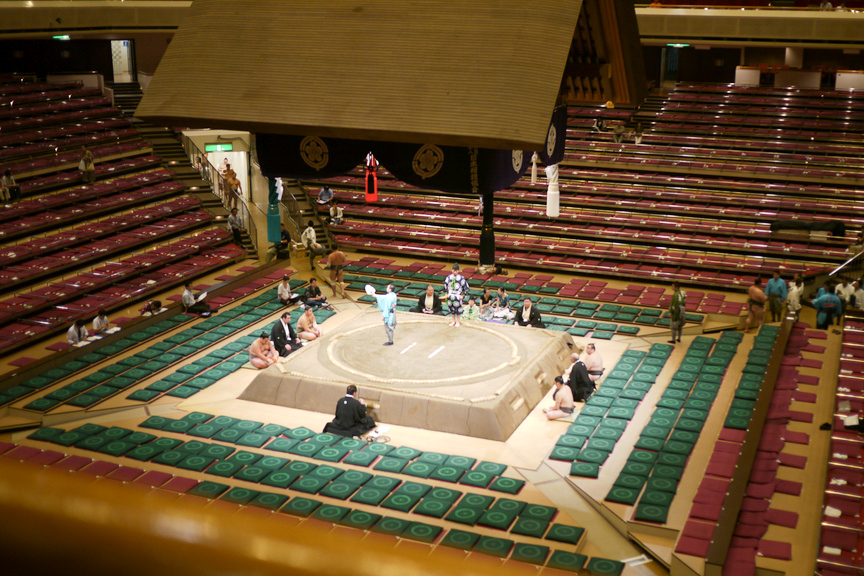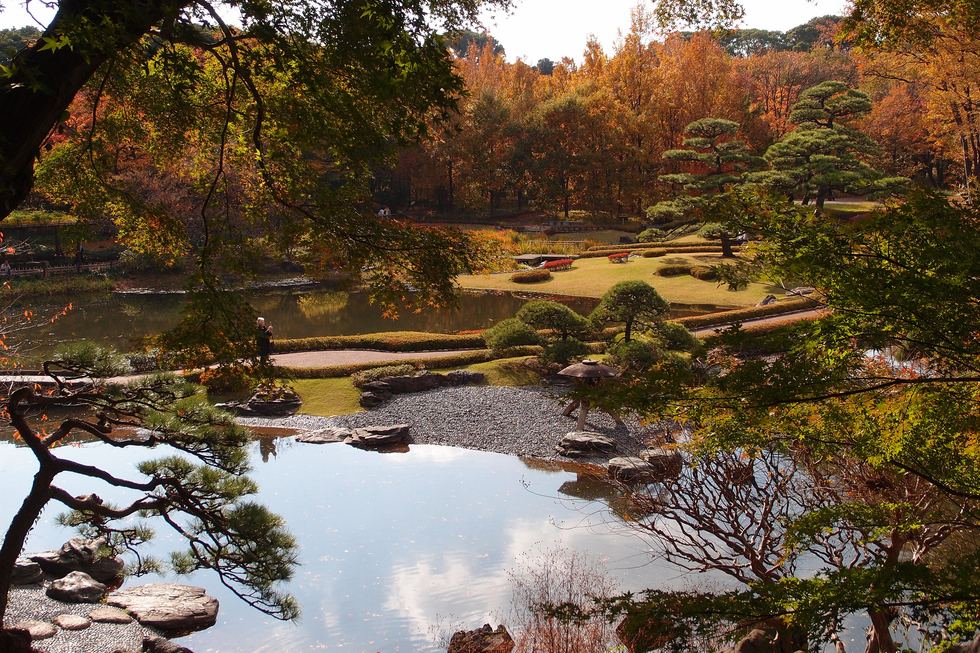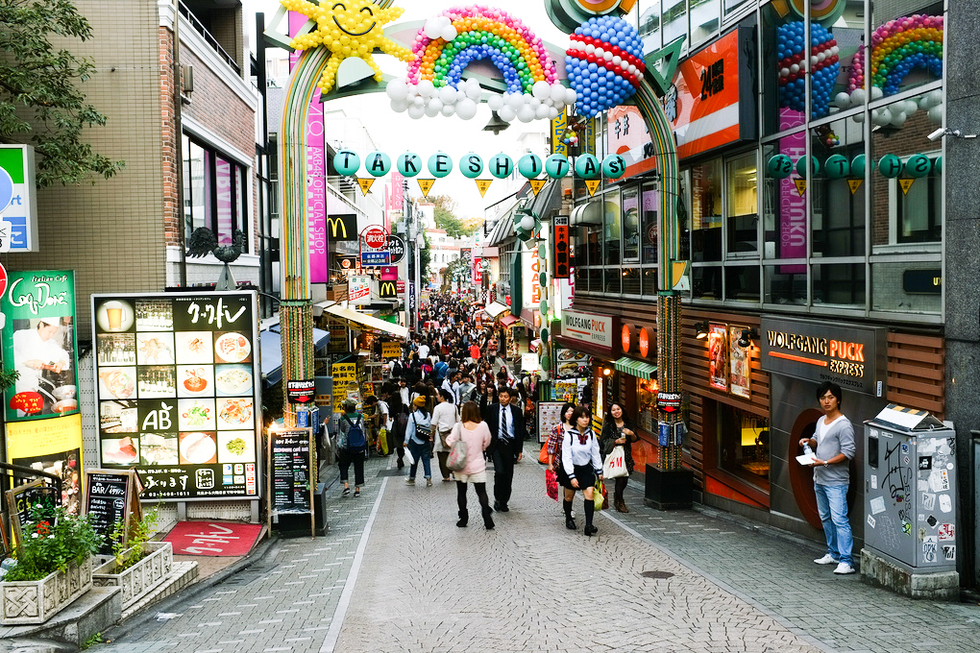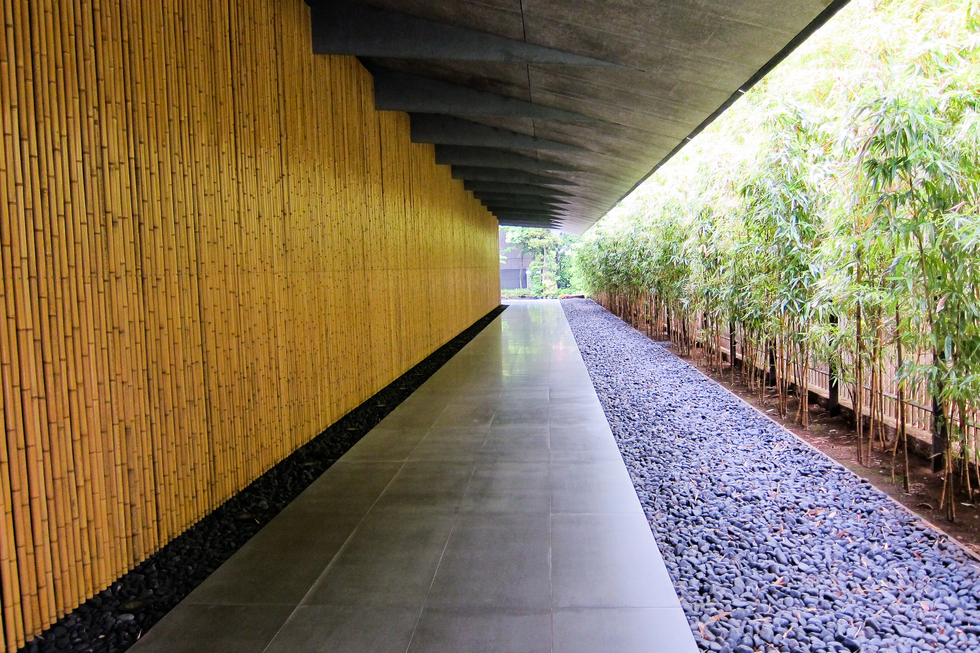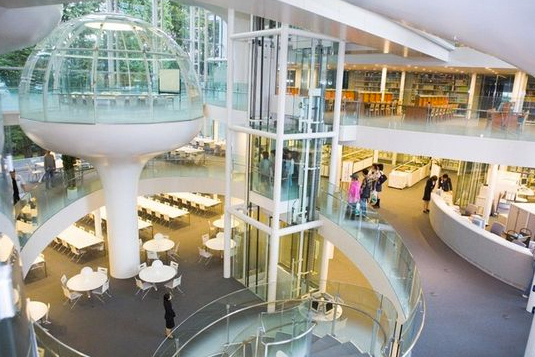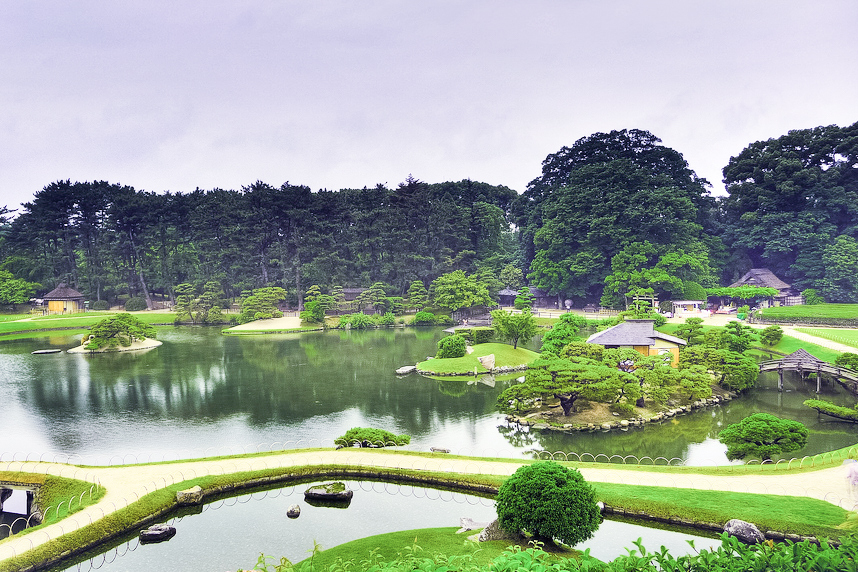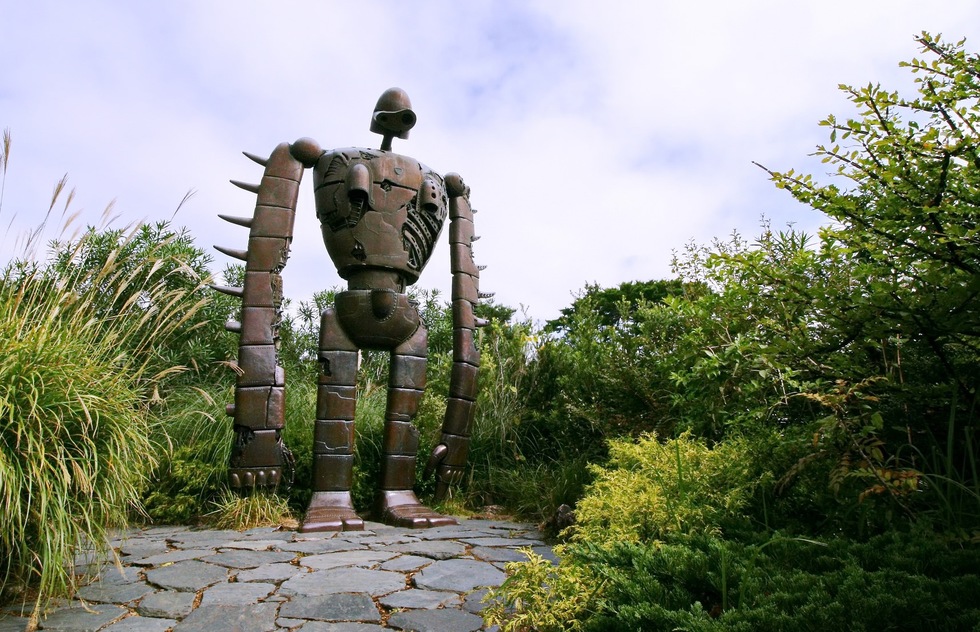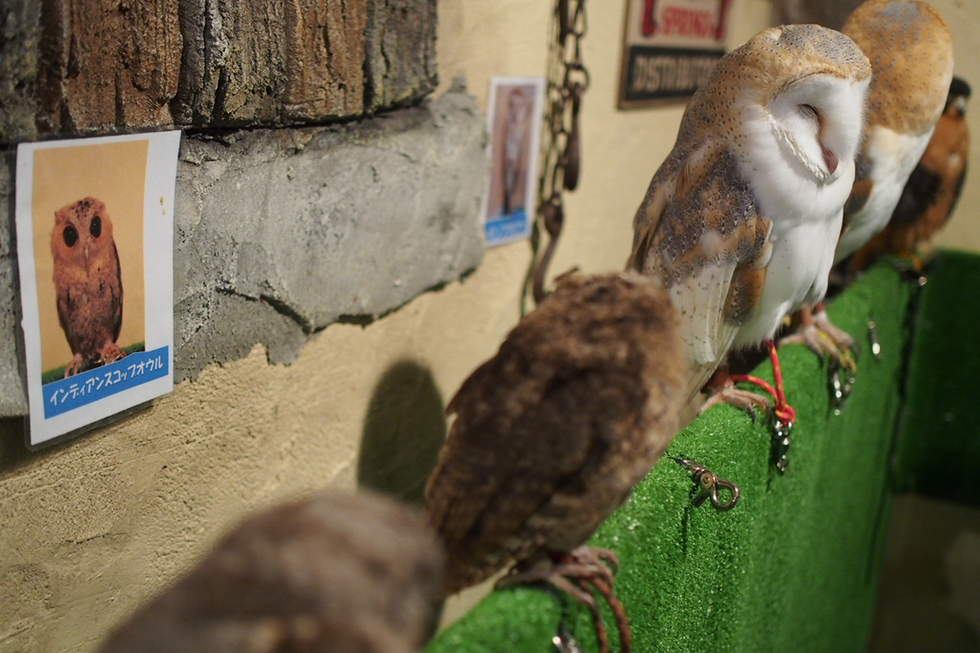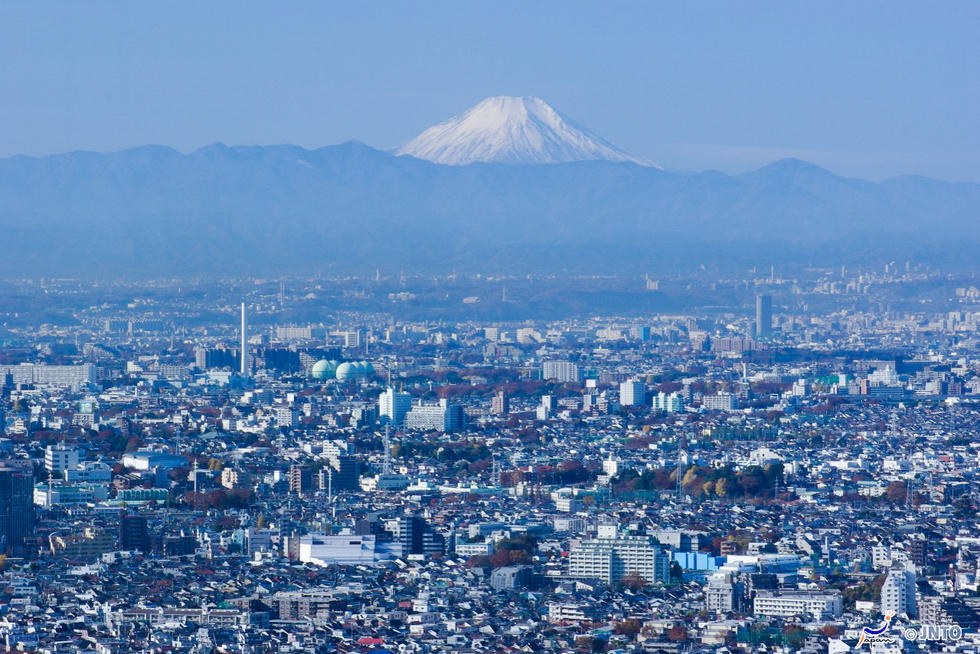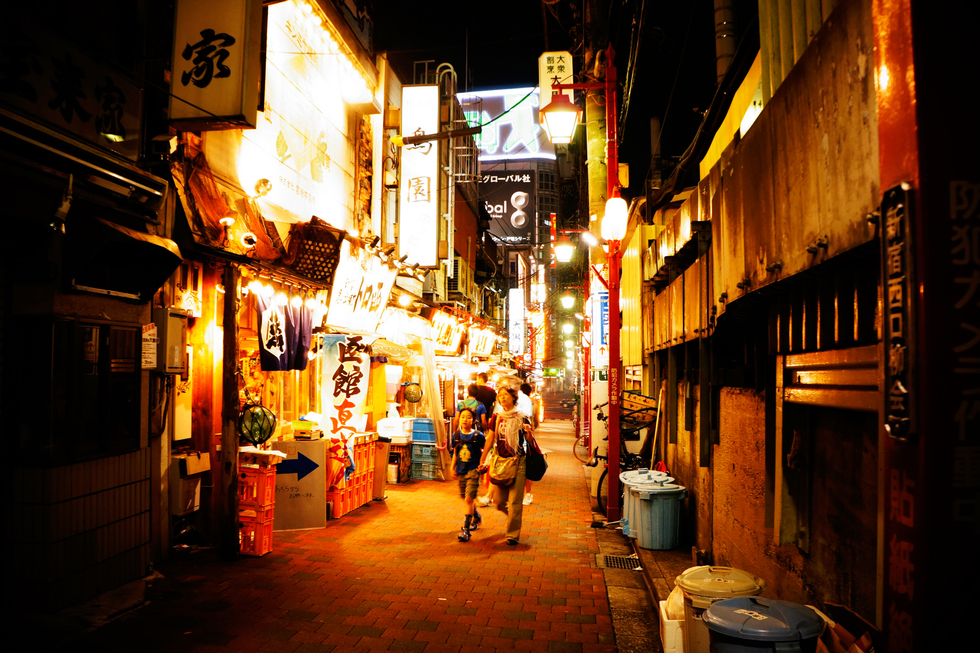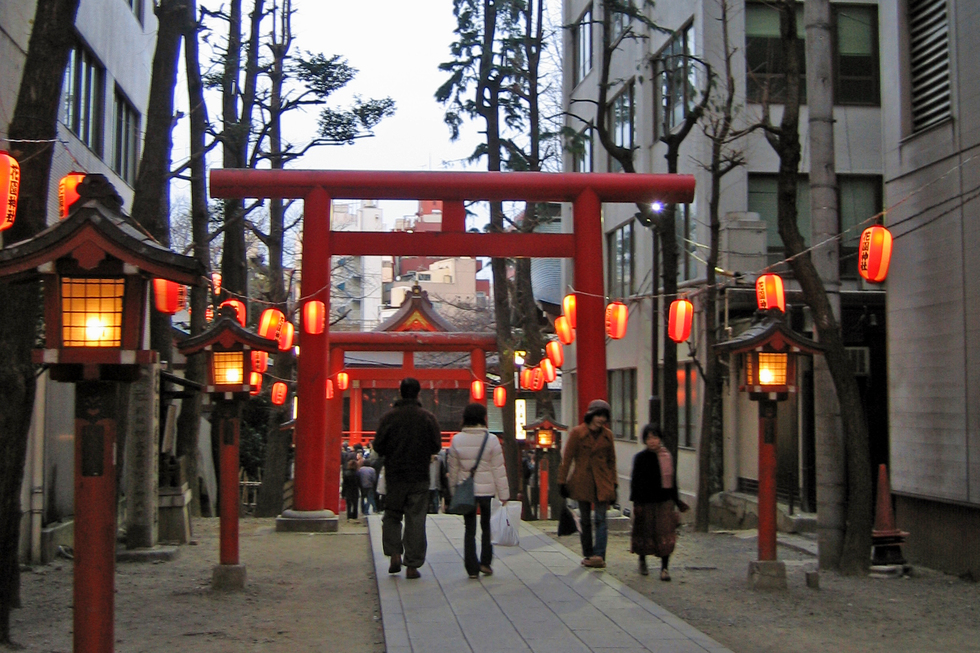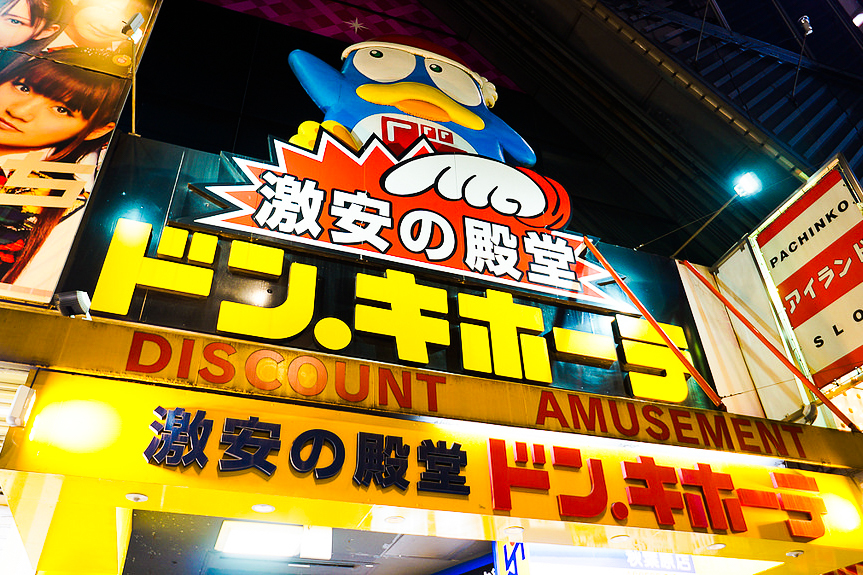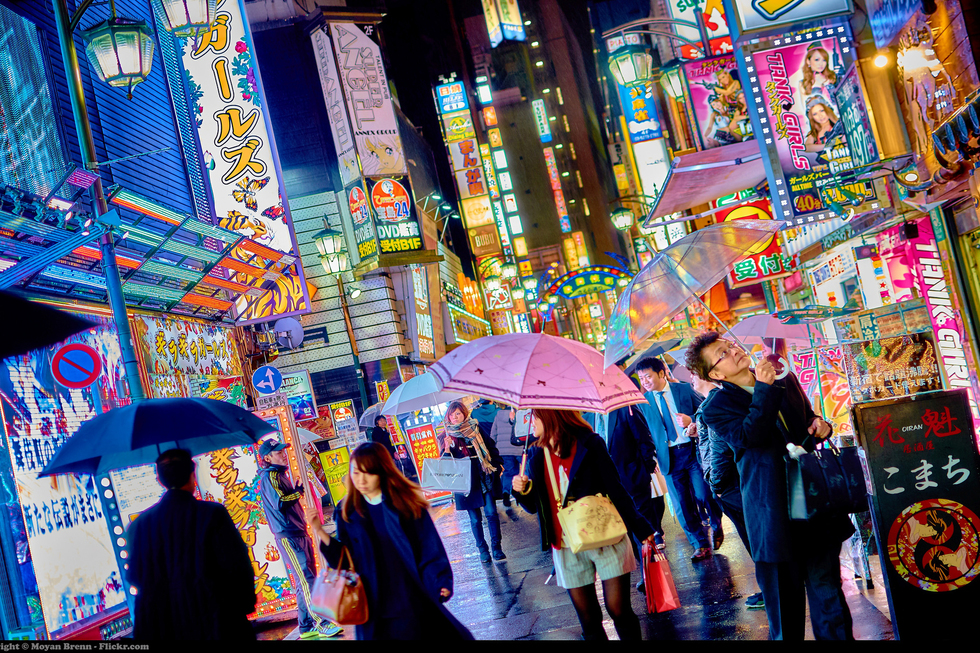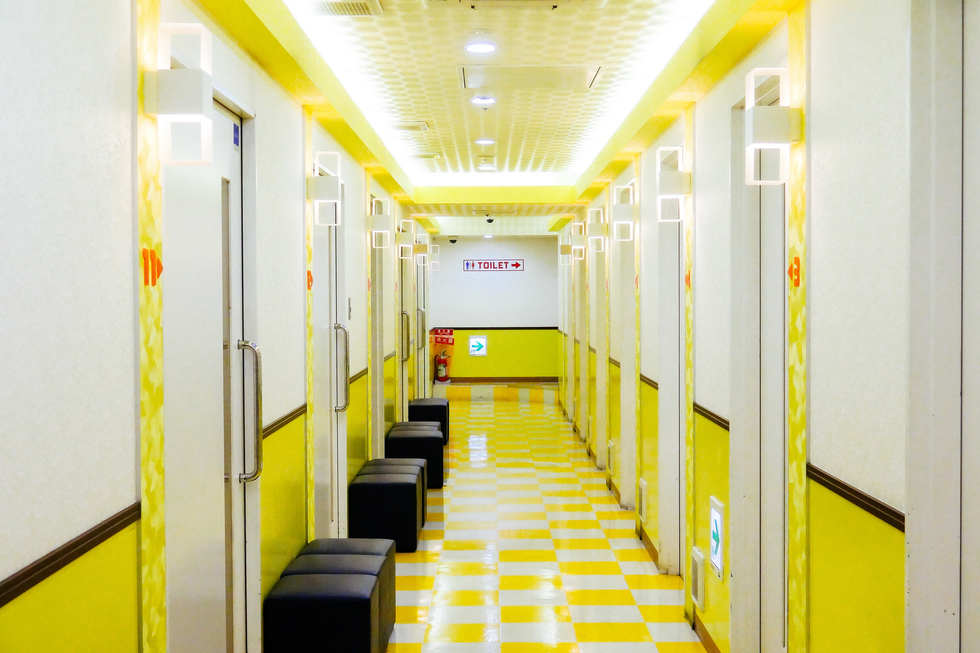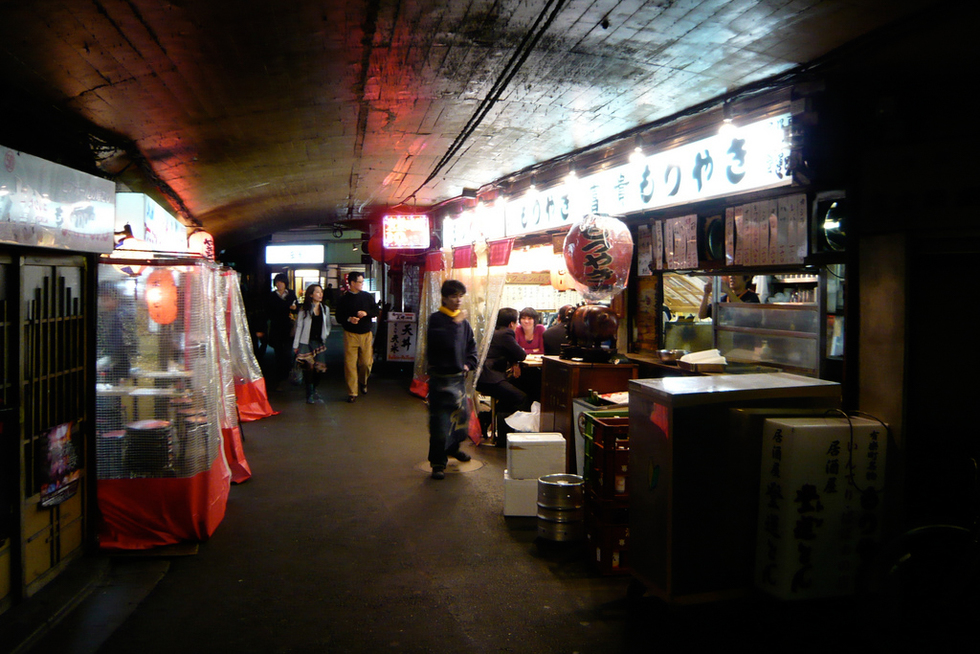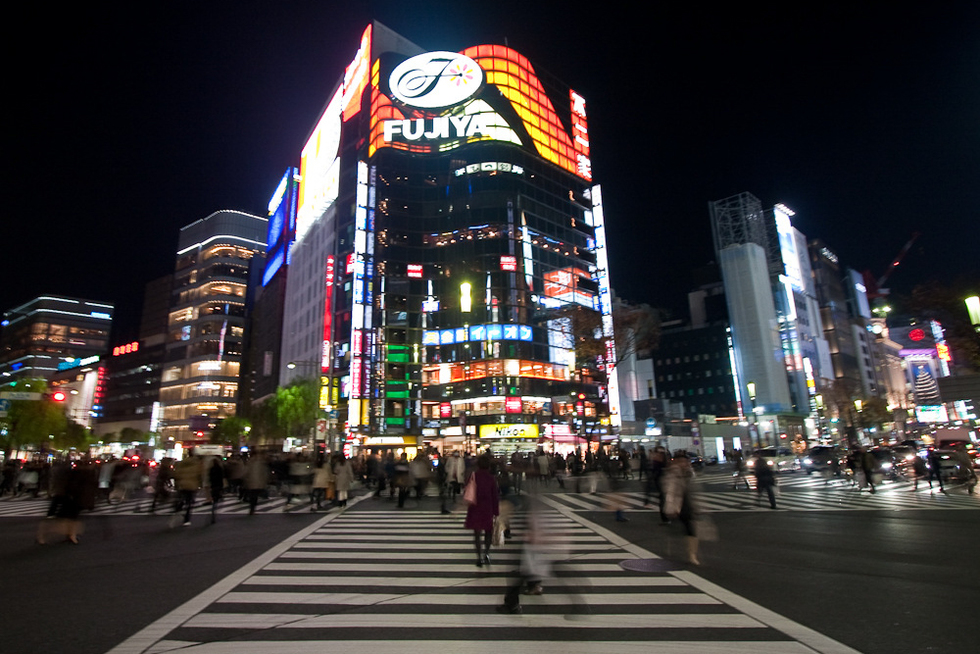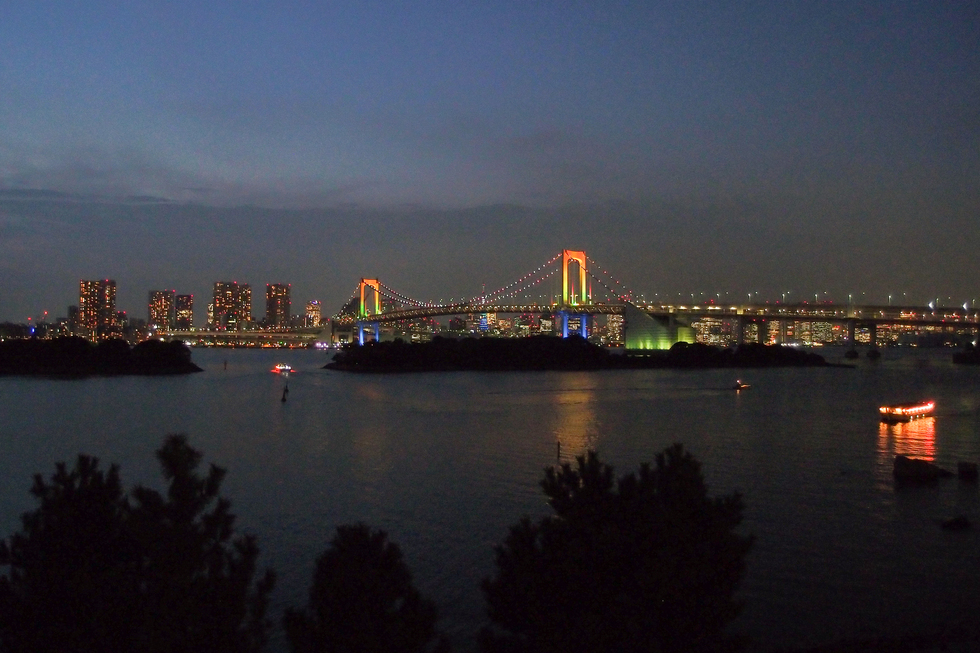24-Hour Tokyo: A Round-the-Clock Touring Plan
By
By Charlotte B. Hu
Tokyo is awake all hours of the day, offering something at every hour to its residents....and visitors. The 23 wards of the city are fragmented into several smaller districts, and from day to night, the city transitions from one mood to another. Use our hour-by-hour guide to sample its many personalities.
5am
Tsukiji Fish Market
Neighborhood: Chuo
Neighborhood: Chuo
Before you start out, buy a Tokyo Tour Ticket for about 1,590 yen (around US$16) to cover all your transportation costs for the day. The train systems begin operating around 4:30–5am, just in time for your first stop.
Tsukiji Fish Market, a fascinating carnival of seafood commerce, has always been a favorite among jet-lagged visitors and locals alike; as of November 2016, it moves to Toyosu, a surburban locale that's an 18-minute train ride from its original home in Chuo.
The fishmongering spectacle will jolt you awake, both the sight of merchants standing on footstools boisterously hawking their wares and the second part of the scene, the auctions of fresh catches. Those start around 3am, but the first round of bidding is reserved for residents such as sushi chefs. Visitors usually are allowed to begin watching the day's auction at around 5am. With the shouting, the frantic gestures and the massive fish on display, it's as entertaining as a circus.
Before you go, check the calendar (www.tsukiji-market.or.jp) to see if the auction market is open—it can be quiet on certain days.
Tsukiji Fish Market, a fascinating carnival of seafood commerce, has always been a favorite among jet-lagged visitors and locals alike; as of November 2016, it moves to Toyosu, a surburban locale that's an 18-minute train ride from its original home in Chuo.
The fishmongering spectacle will jolt you awake, both the sight of merchants standing on footstools boisterously hawking their wares and the second part of the scene, the auctions of fresh catches. Those start around 3am, but the first round of bidding is reserved for residents such as sushi chefs. Visitors usually are allowed to begin watching the day's auction at around 5am. With the shouting, the frantic gestures and the massive fish on display, it's as entertaining as a circus.
Before you go, check the calendar (www.tsukiji-market.or.jp) to see if the auction market is open—it can be quiet on certain days.
6am
Sensoji Temple
Neighborhood: Taito (Asakusa)
You'll be able to get here easily from Chuo via the Asakusa line or from the new market via the Tokyo water taxi. Built by buddhist monks in the 6th century, Sensoji is now the symbol of the Asakusa district. One of Tokyo’s most colorful temples, the grounds are open at all hours to visitors. An excellent time to see the temple is at dawn, when the dim, scripture-covered lanterns are extinguished as the sun rises. Dawn is also ideal because the the herds of visitors have yet to arrive.
Neighborhood: Taito (Asakusa)
You'll be able to get here easily from Chuo via the Asakusa line or from the new market via the Tokyo water taxi. Built by buddhist monks in the 6th century, Sensoji is now the symbol of the Asakusa district. One of Tokyo’s most colorful temples, the grounds are open at all hours to visitors. An excellent time to see the temple is at dawn, when the dim, scripture-covered lanterns are extinguished as the sun rises. Dawn is also ideal because the the herds of visitors have yet to arrive.
7am
Kannonura Street
Neighborhood: Taito (Asakusa)
Situated behind the Sensoji Temple, Kannonura Street is one of the few places in modern Tokyo where you can see geisha establishments and the traditional tea houses where geishas—female entertainers and hostesses skilled in classical music, games, dance, and conversation—perform and receive guests. Although many of the places are open exclusively to natives, in the street you can commonly spot geishas passing by in full makeup and dress.
Situated behind the Sensoji Temple, Kannonura Street is one of the few places in modern Tokyo where you can see geisha establishments and the traditional tea houses where geishas—female entertainers and hostesses skilled in classical music, games, dance, and conversation—perform and receive guests. Although many of the places are open exclusively to natives, in the street you can commonly spot geishas passing by in full makeup and dress.
8am
Many small temples and shrines (most of which are open at this hour) are scattered all over the park, which is located right next to the Ueno Station. The style of the park pays tribute to the wealth and grandeur of the Edo period (1603–1868). A thousand cherry blossom trees line the park (which also contains Tokyo University), making it one of the best places for a hanami, or cherry blossom viewing party, during the spring seasons from March to late May. The fall isn't a bad time to visit either; in autumn, the leaves shroud the tree tops and ground in a rich gold color.
Ueno Park
Neighborhood: Taito (Ueno)
Neighborhood: Taito (Ueno)
Many small temples and shrines (most of which are open at this hour) are scattered all over the park, which is located right next to the Ueno Station. The style of the park pays tribute to the wealth and grandeur of the Edo period (1603–1868). A thousand cherry blossom trees line the park (which also contains Tokyo University), making it one of the best places for a hanami, or cherry blossom viewing party, during the spring seasons from March to late May. The fall isn't a bad time to visit either; in autumn, the leaves shroud the tree tops and ground in a rich gold color.
9am
Neighborhood: Taito
The National Museum of Science and Nature has been carefully curated around the theme of "Coexistence of Mankind and Nature." It explores that subject with a collection of more than 14,000 antiques and artifacts ranging from prehistoric to modern. Explanations are not in English, which makes the eccentricity of the different exhibits (dinosaur skeletons, stuffed woodland creatures, vintage cameras, classic wines, dead beetles) stand out even more. The museum opens at 9am on the dot, so enjoy it while it’s still empty.
The National Museum of Science and Nature has been carefully curated around the theme of "Coexistence of Mankind and Nature." It explores that subject with a collection of more than 14,000 antiques and artifacts ranging from prehistoric to modern. Explanations are not in English, which makes the eccentricity of the different exhibits (dinosaur skeletons, stuffed woodland creatures, vintage cameras, classic wines, dead beetles) stand out even more. The museum opens at 9am on the dot, so enjoy it while it’s still empty.
10am
Neighborhood: Taito
The Tokyo National Museum is located nearby on Ueno Park grounds. It's an amalgamation of six different but joined houses, each showcasing idifferent types of arts and exhibitions from samurai armor to painted screens and modern kimonos. You could easily get lost for hours exploring Japanese art, history, and culture here, but it’s best to wrap up your tour visit before the tour buses start arriving in the afternoon—or at the very least by 11am for your next stop on your 24-hour tour.
The Tokyo National Museum is located nearby on Ueno Park grounds. It's an amalgamation of six different but joined houses, each showcasing idifferent types of arts and exhibitions from samurai armor to painted screens and modern kimonos. You could easily get lost for hours exploring Japanese art, history, and culture here, but it’s best to wrap up your tour visit before the tour buses start arriving in the afternoon—or at the very least by 11am for your next stop on your 24-hour tour.
11am
Ryogoku and Mukojima
Neighborhood: Sumida
These neighborhoods contain probably the first things you think of when you think traditional Japanese culture: sumo wrestlers and geishas. At Ryogoku, the sumo neighborhood, “stables” host early morning practices for the shows at night; the Tokyo Tourism Office can help with tickets to these practice sessions. Afterward, eat like the wrestlers and try chanko nabe, a hot-pot dish containing a variety of seafood, vegetables, and meat. Ami Ryougoku Souhonten is a popular spot for the dish, or do the Japanese version of eating where the truck drivers eat (when on the interstate) and follow the trail of wrestlers. Mukojima, on the other hand, is the most famous geisha district in Tokyo. If you didn’t see any geishas out and about in Asakusa, head to the beautiful neighborhood park Mukojima-Hyakkaen, where geishas go for lunchtime strolls.
These neighborhoods contain probably the first things you think of when you think traditional Japanese culture: sumo wrestlers and geishas. At Ryogoku, the sumo neighborhood, “stables” host early morning practices for the shows at night; the Tokyo Tourism Office can help with tickets to these practice sessions. Afterward, eat like the wrestlers and try chanko nabe, a hot-pot dish containing a variety of seafood, vegetables, and meat. Ami Ryougoku Souhonten is a popular spot for the dish, or do the Japanese version of eating where the truck drivers eat (when on the interstate) and follow the trail of wrestlers. Mukojima, on the other hand, is the most famous geisha district in Tokyo. If you didn’t see any geishas out and about in Asakusa, head to the beautiful neighborhood park Mukojima-Hyakkaen, where geishas go for lunchtime strolls.
Noon
Neighborhood: Chiyoda
Crossing the bridge into the palace feels like crossing a bridge back in time. The primary residence of the Emperor of Japan, the Tokyo Imperial Palace is surrounded by a giant moat-like structure depsite being in the middle of a bustling city. This awe-inspiring palace spans 1.32 square miles (3.42 square kilometers), including several royal gardens. Visiting also provides an ideal chance to drop in at the nearby Tokyo Tourism Information Center (close to the southeast corner of the palace) to stock up on ideas for the other days of your vacation. The center can also book tickets for you, make reservations, and provide maps and tips.
Crossing the bridge into the palace feels like crossing a bridge back in time. The primary residence of the Emperor of Japan, the Tokyo Imperial Palace is surrounded by a giant moat-like structure depsite being in the middle of a bustling city. This awe-inspiring palace spans 1.32 square miles (3.42 square kilometers), including several royal gardens. Visiting also provides an ideal chance to drop in at the nearby Tokyo Tourism Information Center (close to the southeast corner of the palace) to stock up on ideas for the other days of your vacation. The center can also book tickets for you, make reservations, and provide maps and tips.
1pm
Harajuku Shopping District
Neighborhood: Shibuya
Crazy and questionable fashion, pops of manga costumes and cosplay—the Harajuku Shopping district is the epitome of Japanese youth culture and is a premiere destination for people watching. The best time to go is when it’s the busiest. In the afternoon, you’ll see the widest array of styles and trends.
Crazy and questionable fashion, pops of manga costumes and cosplay—the Harajuku Shopping district is the epitome of Japanese youth culture and is a premiere destination for people watching. The best time to go is when it’s the busiest. In the afternoon, you’ll see the widest array of styles and trends.
2pm
Aoyama Flower Market Tea House and Nezu Museum
Neighborhood: Minato
Minato’s neighborhood signature is probably its greenery. The buildings are designed around the trees and the trees are designed into buildings. This point in the afternoon is perfect time for a break—call it "tea o'clock," because a trip to Japan wouldn’t be complete without sampling different kinds of green tea. At first glance, Aoyama Flower Market Tea House, which is adorned with hanging vines, tiny terraria, and flowers in all kinds of glass vases, seems more suited for fairies and forest nymphs than humans, which makes it a popular tea spot. After that, stroll over to Nezu Museum for its collection of ancient and modern Asian art built into a sleek, minimalist gallery that, like so many wonderful Tokyo spots, accommodates a few sets of gardens.
Minato’s neighborhood signature is probably its greenery. The buildings are designed around the trees and the trees are designed into buildings. This point in the afternoon is perfect time for a break—call it "tea o'clock," because a trip to Japan wouldn’t be complete without sampling different kinds of green tea. At first glance, Aoyama Flower Market Tea House, which is adorned with hanging vines, tiny terraria, and flowers in all kinds of glass vases, seems more suited for fairies and forest nymphs than humans, which makes it a popular tea spot. After that, stroll over to Nezu Museum for its collection of ancient and modern Asian art built into a sleek, minimalist gallery that, like so many wonderful Tokyo spots, accommodates a few sets of gardens.
3pm
Neighborhood: Masashino
The library of the future is here now. Its suspended study pods, all-white aesthetic, and clean-cut lines give the place a chic, postmodern look. Sign up for the architecure tour by registering beforehand on its website.
4pm
Koishikawa Korakuen Garden
Neighborhood: Bunkyo
No matter what season you go, the ever-changing scenery of the garden is always stunning. Koishikawa is one of Japan’s best-preserved traditional parks and one of the only two parks remaining from the Edo period. Acer palmatum, Japanese apricot, Japanese black pine, cherry (including weeping cherry), Japanese camellia, lotus—this is the place to see the country's world-famous native flora. You may want to time your visit to catch one of Koshikawa's two biggest annual events: the rice harvesting in September and the plum festival in February. The colors of the flowering in the historic gardens have been selected by the founders to produce a shifting palette across the calendar.
No matter what season you go, the ever-changing scenery of the garden is always stunning. Koishikawa is one of Japan’s best-preserved traditional parks and one of the only two parks remaining from the Edo period. Acer palmatum, Japanese apricot, Japanese black pine, cherry (including weeping cherry), Japanese camellia, lotus—this is the place to see the country's world-famous native flora. You may want to time your visit to catch one of Koshikawa's two biggest annual events: the rice harvesting in September and the plum festival in February. The colors of the flowering in the historic gardens have been selected by the founders to produce a shifting palette across the calendar.
5pm
Neighborhood: Mitaka
Even if you don’t recognize the name Hayao Miyazaki, he has millions of fans across the world. He's one of the best animated filmmakers to come out of Japan, releasing works such as the Academy Award-winning Spirited Away and the beloved classic My Neighbor Totoro. The whimsical dedicated to his fantasy worlds artfully assembles an assortment of to-scale, real-life re-creations of his quirky characters and sets. The experience is popular with natives and tourists alike, so it can be busy, but crowds die down 1–2 hours before the 6pm closing time. If you have time left over, the swan boat rides of Inokashira Park are within walking distance.
Even if you don’t recognize the name Hayao Miyazaki, he has millions of fans across the world. He's one of the best animated filmmakers to come out of Japan, releasing works such as the Academy Award-winning Spirited Away and the beloved classic My Neighbor Totoro. The whimsical dedicated to his fantasy worlds artfully assembles an assortment of to-scale, real-life re-creations of his quirky characters and sets. The experience is popular with natives and tourists alike, so it can be busy, but crowds die down 1–2 hours before the 6pm closing time. If you have time left over, the swan boat rides of Inokashira Park are within walking distance.
6pm
Neighborhood: Shibuya
A 23-minute ride on the Chuo-Sobu line will take you directly to Shibuya, the birthplace of Japan’s nightlife and the center for the wackiest trends—like themed cafés. Prepare for your shift into night owl mode here. For 1,500 yen/hour (around US$15), you can pet the lovely creatures at Owl Cafe and Bar while you enjoy some drinks. Advance reservations are required.
A 23-minute ride on the Chuo-Sobu line will take you directly to Shibuya, the birthplace of Japan’s nightlife and the center for the wackiest trends—like themed cafés. Prepare for your shift into night owl mode here. For 1,500 yen/hour (around US$15), you can pet the lovely creatures at Owl Cafe and Bar while you enjoy some drinks. Advance reservations are required.
7pm
Neighborhood: Shinjuku
Shinjuku, an 8-minute train ride on the Oedo line from Shibuya, is Tokyo’s most commercialized and cosmopolitan ward. If you happen to make it before sunset (it depends on the time of year), you'll be able to see Mount Fuji in the distance; but if it’s dark, you'll be treated to the iconic sight of brilliantly illuminated Tokyo streets. The observatory in the so-called Metro Building, 202 meters (663 feet) high, is one of the most popular places to watch the iridescent, glittering city making its transition to night. Conveniently, there's also a bar and cafe up there.
Shinjuku, an 8-minute train ride on the Oedo line from Shibuya, is Tokyo’s most commercialized and cosmopolitan ward. If you happen to make it before sunset (it depends on the time of year), you'll be able to see Mount Fuji in the distance; but if it’s dark, you'll be treated to the iconic sight of brilliantly illuminated Tokyo streets. The observatory in the so-called Metro Building, 202 meters (663 feet) high, is one of the most popular places to watch the iridescent, glittering city making its transition to night. Conveniently, there's also a bar and cafe up there.
8pm
Golden Gai
Neighborhood: Shinjuku
Travel back to Old World Tokyo with a visit to the traditional nightlife scene of the Golden Gai. The area has preserved many of its original buildings through some degree of luck and the resistance of its residents to development. The themed bars are tiny but have plenty of character. If you’re hungry at this point, the area's Nagi is a fantastic ramen shop—the distinct taste of its ramen is due to the fact that the broth is made from tiny, dried sardines, unlike any other shop in Tokyo. Order your food Japanese late-night style by purchasing a meal ticket from a machine. Your dinner will be called out by the chef when it’s ready.
Travel back to Old World Tokyo with a visit to the traditional nightlife scene of the Golden Gai. The area has preserved many of its original buildings through some degree of luck and the resistance of its residents to development. The themed bars are tiny but have plenty of character. If you’re hungry at this point, the area's Nagi is a fantastic ramen shop—the distinct taste of its ramen is due to the fact that the broth is made from tiny, dried sardines, unlike any other shop in Tokyo. Order your food Japanese late-night style by purchasing a meal ticket from a machine. Your dinner will be called out by the chef when it’s ready.
9pm
Hanazono Jinja Shrine
Neighborhood: Shinjuku
With an entrance directly next to the Golden Gai, this narrow, forested pathway leads to one of the few remaining traditional shrines in Shinjuku. The grounds are lit by lanterns. Hanazono Jinja is a peaceful, secret place to relax and recharge before pushing through the rest of the night.
Neighborhood: Shinjuku
With an entrance directly next to the Golden Gai, this narrow, forested pathway leads to one of the few remaining traditional shrines in Shinjuku. The grounds are lit by lanterns. Hanazono Jinja is a peaceful, secret place to relax and recharge before pushing through the rest of the night.
10pm
Don Quijote
Neighborhood: Shinjuku
As much an amusement park for your senses as a store, “Donki” is known as one of the most awesome discount markets in all of Japan. The 24-hour mall offers entertainment and a wide range of interesting (but not always appropriate) items from Michael Jackson masks to butt pillows to Necomimi cat ears you wear on a headband. It's eccentric, exciting, and sometimes chaotic—but it’s the best place to shop for cheap gifts and only-in-Japan gags.
Neighborhood: Shinjuku
As much an amusement park for your senses as a store, “Donki” is known as one of the most awesome discount markets in all of Japan. The 24-hour mall offers entertainment and a wide range of interesting (but not always appropriate) items from Michael Jackson masks to butt pillows to Necomimi cat ears you wear on a headband. It's eccentric, exciting, and sometimes chaotic—but it’s the best place to shop for cheap gifts and only-in-Japan gags.
11pm
Kabukicho
Neighborhood: Shinjuku
Walk six minutes directly south from Donki to reach Kabukicho, the infamous red light district located in the heart of Tokyo. This is the epitome of Tokyo by night: dazzling neon lights, lanes full of gaming arcades, loudspeakers, and hostess bars. Most nightspots only accept local patrons and are usually overpriced, but a safe bet would be to peek inside two of the most popular arcades: Game Taito Station and Club Sega.
Neighborhood: Shinjuku
Walk six minutes directly south from Donki to reach Kabukicho, the infamous red light district located in the heart of Tokyo. This is the epitome of Tokyo by night: dazzling neon lights, lanes full of gaming arcades, loudspeakers, and hostess bars. Most nightspots only accept local patrons and are usually overpriced, but a safe bet would be to peek inside two of the most popular arcades: Game Taito Station and Club Sega.
Midnight
Karaoke Room at Utahiroba
Neighborhood: Shinjuku
Karaoke can get expensive in Tokyo, especially as the night goes on. This bar offers the best value in the area. Find it right next to the Shinjuku Station, stop by for an hour, and sing a song or two. You can either rent a private room or sing publicly in the bar area once you've bought a drink. But don't get carried away! You need to get on the JR train by around 12:20am because all trains in Tokyo stop running after 1am. Hope you wore your walking shoes, because you’re going to be on foot for the rest of the night.
Neighborhood: Shinjuku
Karaoke can get expensive in Tokyo, especially as the night goes on. This bar offers the best value in the area. Find it right next to the Shinjuku Station, stop by for an hour, and sing a song or two. You can either rent a private room or sing publicly in the bar area once you've bought a drink. But don't get carried away! You need to get on the JR train by around 12:20am because all trains in Tokyo stop running after 1am. Hope you wore your walking shoes, because you’re going to be on foot for the rest of the night.
1am
Yakitori Alley at Yurakucho
Neighborhood: Chiyoda
While Tokyo's streets are full of 24-hour noodle shops and hot coffee vending machines, these concessions pale in comparison to the food at Yakitori Alley, the ultimate destination for late-night eats. The stalls are tucked into the wall under the JR rails and emit a mouthwatering aroma. Nosh your way through snacks such as takoyaki (octopus hidden in a ball of savory deep-fried dough) and other fatty Japanese eats. You may never know exactly what you were eating, but that's part of discovering Japan, and after the drinks you've had, your stomach will thank you.
While Tokyo's streets are full of 24-hour noodle shops and hot coffee vending machines, these concessions pale in comparison to the food at Yakitori Alley, the ultimate destination for late-night eats. The stalls are tucked into the wall under the JR rails and emit a mouthwatering aroma. Nosh your way through snacks such as takoyaki (octopus hidden in a ball of savory deep-fried dough) and other fatty Japanese eats. You may never know exactly what you were eating, but that's part of discovering Japan, and after the drinks you've had, your stomach will thank you.
2am
Yuraku Concourse Area
Neighborhood: Ginza
A 15-minute walk north from Yakitori, it's one of the only late-night hangouts where you can find both bubble tea and pierogis to complement the snacks you had at Yakitori. The concourse is plastered with poignantly nostalgic, time-worn Japanese posters and is a popular pathway for those hoping to get to Ginza. At this hour, the people congregated here are an interesting mix of those just getting off work or those just getting started—take a few beats to observe the syncopation of lives in the ever-changing city of Tokyo.
Neighborhood: Ginza
A 15-minute walk north from Yakitori, it's one of the only late-night hangouts where you can find both bubble tea and pierogis to complement the snacks you had at Yakitori. The concourse is plastered with poignantly nostalgic, time-worn Japanese posters and is a popular pathway for those hoping to get to Ginza. At this hour, the people congregated here are an interesting mix of those just getting off work or those just getting started—take a few beats to observe the syncopation of lives in the ever-changing city of Tokyo.
3am
300 Bar and Ginza Yon-Chome Intersection
Neighborhood: Ginza
Many city bars charge foreigners exorbitant door prices, or they lie and tell tourists they're full. 300 Bar is one of the few nightspots in Ginza which is open to everyone. It’s an affordable place to get a few drinks (which cost 300 yen—that’s around US$3) before heading over to look at the famous Ginza Yon-Chome intersection by night. The club caters mostly to students and a younger crowd, but still offers a large selection of cocktails, beers, and sakes.
Many city bars charge foreigners exorbitant door prices, or they lie and tell tourists they're full. 300 Bar is one of the few nightspots in Ginza which is open to everyone. It’s an affordable place to get a few drinks (which cost 300 yen—that’s around US$3) before heading over to look at the famous Ginza Yon-Chome intersection by night. The club caters mostly to students and a younger crowd, but still offers a large selection of cocktails, beers, and sakes.
4am
Hama Rikyu Garden "infinity mirror" and Rainbow Bridge
Neighborhood: Ginza
Head over to the Hama Rikyu Garden, a 15-minute walk south of the Ginza Yon-Chome intersection. The park's ponds are fed by the nearby bay. At night, you'll see the city skyline reflected in the water, and looking toward the bay, there's the famous Rainbow Bridge to Odaiba illuminated by horizontal rainbow lights It’s the perfect place to watch the sun rise over the city and finish your long day’s journey into night—and back into day. Welcome to Tokyo!
Head over to the Hama Rikyu Garden, a 15-minute walk south of the Ginza Yon-Chome intersection. The park's ponds are fed by the nearby bay. At night, you'll see the city skyline reflected in the water, and looking toward the bay, there's the famous Rainbow Bridge to Odaiba illuminated by horizontal rainbow lights It’s the perfect place to watch the sun rise over the city and finish your long day’s journey into night—and back into day. Welcome to Tokyo!





